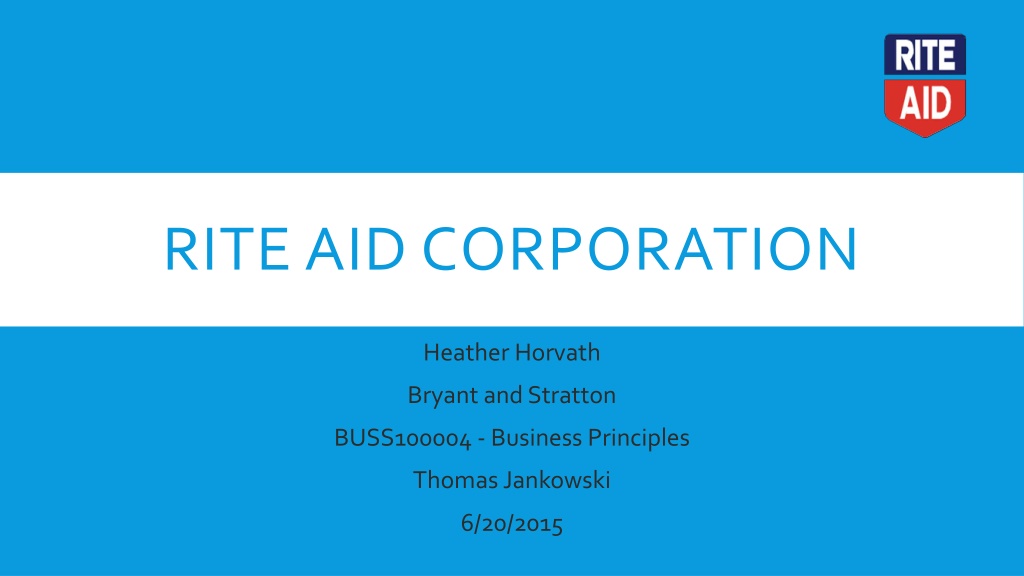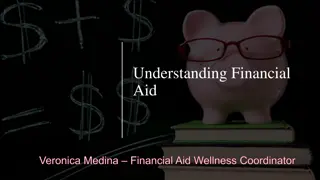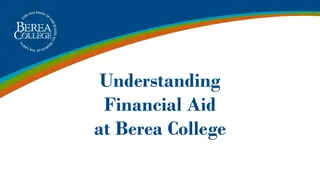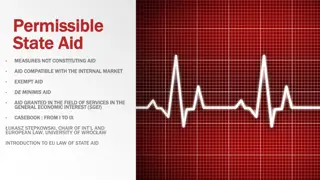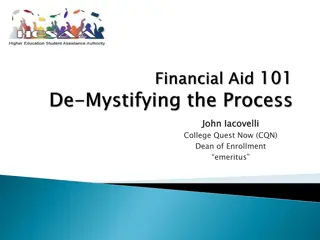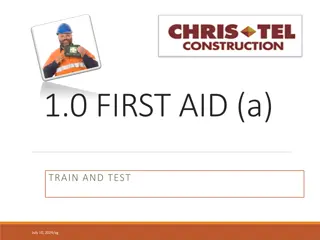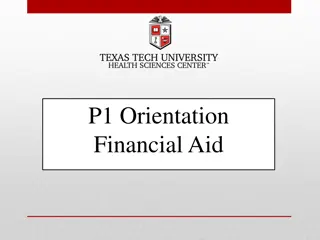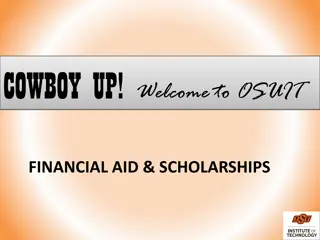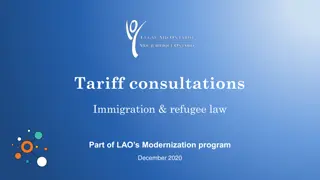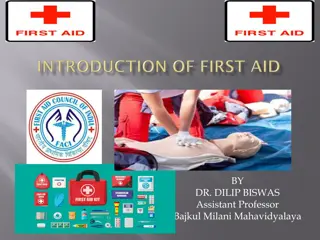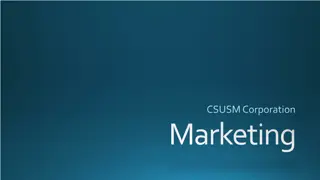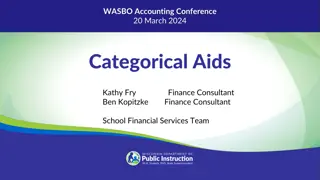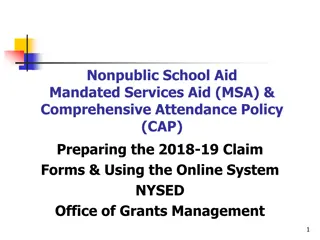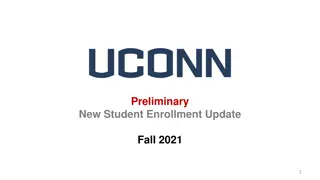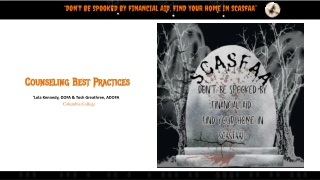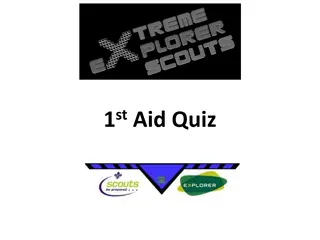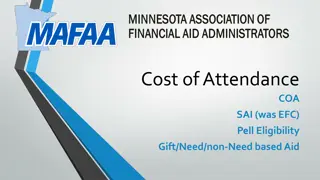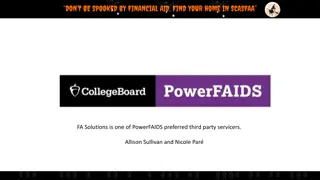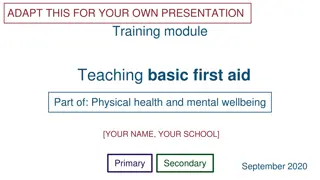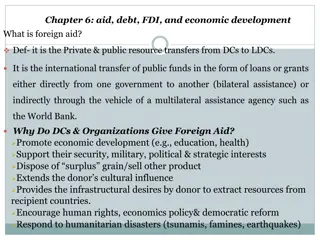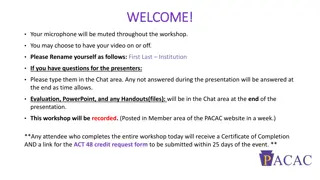Rite Aid Corporation Business Overview
Rite Aid Corporation, a prominent health and wellness drug store chain, has grown since 1962 to become a major player in the industry. With a decentralized organizational structure and a tall hierarchy, Rite Aid offers diverse career opportunities and employs around 89,000 individuals across various departments. The company's marketing strategy emphasizes the importance of creating value for customers through the four Ps: Product, Price, Place, and Promotion. Learn more about Rite Aid's business structure and marketing approach in this comprehensive overview.
Download Presentation

Please find below an Image/Link to download the presentation.
The content on the website is provided AS IS for your information and personal use only. It may not be sold, licensed, or shared on other websites without obtaining consent from the author. Download presentation by click this link. If you encounter any issues during the download, it is possible that the publisher has removed the file from their server.
E N D
Presentation Transcript
RITE AID CORPORATION Heather Horvath Bryant and Stratton BUSS100004 -Business Principles Thomas Jankowski 6/20/2015
BUSINESS STRUCTURE Rite Aid Corporation is a health and wellness drug store chain that has been doing business since 1962 when the first store opened in Scranton, PA under the name of Thrift D Discount Center. They grew their brand name through acquisitions and opening of new stores. Rite Aid now has approximately 4,600 stores within 31 states including the District of Columbia. They are more prominent along the East, West and Gulf coast of the United States. This makes them the largest drug store chain along the East Coast and the third largest in the United States (riteaid.com, 2001-2015, Our Story). Rite Aid offers many career opportunities within their business structure and employs approximately 89,000 employees within their stores and corporate office to include retail, pharmacy, corporate and distribution and logistics positions. With the departmental areas of the Rite Aid Corporation they would have a decentralized organizational structure to which they rely on a team environment for making business decisions at different levels, however some individuals, such as those in management positions may have some autonomy to making business decisions (Vitez, O., 2015, Definition) that affect their store or department. Rite Aid is also a publicly traded company within the New York Stock Exchange.
BUSINESS STRUCTURE Rite Aid is considered to have a Tall organizational structure as they require a taller hierarchy, meaning they have several levels of management such as: Board of Directors Executive Team First Tier Vice Presidents Second Tier Vice Presidents Middle Management
MARKETING Marketing can be used in terms to sell and advertise products and services. However, marketing is a much broader term. As stated, in the book Understanding Business (2016) by the American Marketing Association marketing is the activity, set of institutions, and processes for creating, communicating, delivering and exchanging offerings that have value for customers, clients, partners and society (p. 362). Marketing has evolved over the years from the production era to the selling era, to the marketing concept era, to the customer relationship era and today to the emerging mobile/on-demand marketing era. A company s marketing concept would involve the main focus of all of these eras combined. Management would develop a philosophy to include the company objectives through strategizing, planning and researching to identify customer needs and wants in order to produce customer satisfaction.
MARKETING The four P s would be used to achieve a company s marketing concept: Product Selecting products and services to meet all customer needs and wants Price Setting appropriate prices to remain competitive as well as to ensure a profit while not sacrificing quality and customer satisfaction. Offering discounts or savings plans to further your commitment in offering the best prices. Place Defining distribution channels of the product for convenience of the shopping consumer whether in store, drive thru pick up, and the internet. Promotion Communicating with the customer through advertising of sales and promotions using various channels such as media, newspaper ads, and internet.
MARKETING Marketing concept and The four P s of Rite Aid: At Rite Aid, we provide you with the support, products, pharmacy services, and the wellness+ with Plenti savings opportunities you need to keep your whole family healthy. With us, it's personal .
MANAGEMENT Management is the process used to accomplish organizational goals through planning, organizing, leading and controlling people and other organizational resources (Nickels, McHugh and McHugh, 2016, p. 187). There are typically many layers to management of an organization today and functions are performed as a team vs. the traditional role of managing independently. The first step in the planning process is developing an organizational road map which includes the company s vision, values and mission statement. These components state the company s existence, their purpose and objectives. Top management is typically responsible for the vision while incorporating other levels of management and employees to form a mission statement. Rite Aid has formed all of these components to create unity among all employees with common goals as well as inform external stakeholders of their purpose and intentions as an organization through stating their vision as What we aspire to be , their mission as Our plan to get there , and their core values as The principles that guide us (riteaid.com, 2001- 2015, About Us).
MANAGEMENT Once a road map has been established other forms of planning are conducted. There are four major forms of planning: Strategic Planning, Tactical Planning, Contingency Planning, and Operational Planning. Rite Aid has many layers of management that help carry out these forms of planning: Executive Team which would typically carry out strategic planning, such as, determining goals of the organization using how, what, why and where factors by setting policies, procedures, strategies and resources. Rite Aids executive team consists of a Chairman and Chief Executive Officer; John T. Stanley, President and Chief Operating Officer; Ken Martindale, Executive Vice President and Chief Administrative Officer; Frank Vitrano, and Executive Vice President and Chief Financial Officer; Darren Karst. (Rite Aid, 2001-2015, Governance). Tactical planning would be carried out by lower level managers, such as Rite Aids Human Resources Officer; Dedra Castle, Vice President of Merchandising; Tony Montini, Vice President of Pharmacy; Robert I. Thompson, Vice President of Store Operations; Robert K Thompson and several more. These individuals would be responsible for overseeing the what, the who and the how in order to meet strategic objectives. Contingency Planning, although not many companies form these plans, are back up plans. They are primarily used to change the course of action when primary objectives are not being met or used in crisis situations. An example of how Rite Aid could use this type of plan is to meet sales goals that they may be falling short of. Store management, along with marketing management could develop a plan to ensure these goals are met. Operational Planning , would typically fall to the responsibility of store management as it focuses on the day to day operations of the store to include staff scheduling, delivery scheduling, ordering and other work standards.
MANAGEMENT Another function of management is organizing. This is where they plan a course of action to accomplish their goals by allocating resources, assigning tasks and establishing resources (Nickels, McHugh and McHugh, 2016, p. 193). Tasks are usually assigned based on skill and managerial level. Looking at an organizational chart can give a picture of the levels of management as well as what tasks have been allocated to specific areas. Referencing Rite Aids corporate management team their top management consists of an executive team and vice presidents of the most intricate responsibilities of the corporation, such as: marketing, pharmacy, human resources, merchandising, etc. Middle management would consist of individual store and pharmacy managers as well as district division managers. Supervisory management would consist of assistant managers and frontline supervisors. Lastly, there are also non-supervisory employees such as cashiers, pharmaceutical and stock employees.
MANAGEMENT Leading is another function of management where leadership skills are important to carry out the company s visions and values. Leadership should have a trickle effect starting at the top management level reaching all the way to your frontline non supervisory employees. All organizations need leaders, and all employees can help lead whether management or non management (Nickels, McHugh and McHugh, 2016, p. 196). Leading is communicating, establishing, promoting, embracing and accountability. All of these factors should be used when relating to a company s vision, values, ethics, change and transparency. Lastly, controlling is a management function of the business in which measures performance relating to planned objectives and standards (Nickels, McHugh and McHugh, 2016, p. 201). Controlling allows for management to determine what's working and what's not working. Many levels of management are responsible in defining the control process through establishing clear performance standards, recording and monitoring results, comparing results with objectives, communicating results and taking corrective action or providing positive feedback. All levels of management have performance standards that must be met. Customer satisfaction can be used as a measurement tool as well as profit in sales goals.
PRODUCTION Rite Aid is part of the retail service sector and therefore they do not manufacture or produce goods they sell the goods. Retail stores, do however, have production processes they follow in which the focus would be those factors that enable the store to distribute its merchandise and to run effectively (Wicks, 2015, para. 1). Factors of Production for Retail include: Physical Assets Location and convenience of the store to its customers Point of Sales Systems, which allows customer convenience in paying for the items they purchase Technology, to further provide convenience for online shoppers Labor Employees and personnel who are skilled in specific areas to meet the following requirements: and provide a service to internal and external customers: Conduct sales and create marketing Stock merchandise Provide technical support Finance Provide customer service
PRODUCTION Other Factors of Production for Retail include: Financial Capital Purchasing Merchandise to be sold for profit Paying for services to internal employees and external workers Physical assets necessary for merchandise distribution Enterprise Making sound financial decisions Decisions to drive sales and profit Effective movement of goods from manufacturing, supplier and distribution of merchandise The factors involved in retail production are operation management techniques to ensure quality and drive sales through enhancing the customer experience.
FINANCIAL Financial management policies must be in place for a business to establish guidelines to meet or develop financial goals and objectives, make financial decisions and report financial status. Financial responsibilities are typically the responsibility of the Board of Directors Treasurer as well as shared with executive members of the company such as the Chief Executive Officer (CEO) and the Chief Financial Officer (CFO). Rite Aid reports financial information quarterly and by fiscal year to include challenges, profitability successes, short term and long term financial initiatives. You can find this information publicly posted to their website under the Investor Relations link Rite Aid Investor Relations.
FINANCIAL Part of planning and decision making relating to financial objectives is performing a SWOT analysis which is used to identify an organizations strengths, weaknesses, opportunities and threats (Nickels, W., McHugh, J. and McHugh, S., 2016, p. 189). The company should capitalize on the results of this analysis to improve upon its cash flow and capital. According to a SWOT analysis published in May 2013 Rite Aid has named opportunities in which they can capitalize on to improve their indebtedness, customer satisfaction, asset management, lack of diversity in name brand prescription drug supply chain and low margins (Berry, Brigham, Leu, McLaughlin and Wade, 2013, p. 16). Weaknesses are transformed to opportunities in which the company can forecast long and short term financial objectives through partnerships with PBMs (Partnership Benefit Management), expansion into online prescriptions, growing baby boomer population, growth of higher margin services and further development of customer loyalty program (Berry, Brigham, Leu, McLaughlin and Wade, 2013, p. 16).
HUMAN RESOURCE MANAGEMENT Human Resources Management is an essential function to any organization and when used to its full capacity with relation to the functions and processes an organization can reap the rewards with productivity, motivation, performance and profit. The functions in which human resources provides include: Recruiting Training and Development Appraising Compensating Recruiting involves identifying and selecting qualified candidates. Ensuring that this happens Rite Aid has developed a career site on the web in which details the various positions available and fully incorporates a summary of the positions, essential duties and responsibilities, experience and requirements as well as education, certification, licenses or registration requirements. The job descriptions also incorporate what is required by law as well as statements that ensure employment laws and regulations are practiced. Visit the following link to see an actual sample of the efforts to attract qualified candidates Rite Aid Jobs.
HUMAN RESOURCE MANAGEMENT Rite Aid is committed to training and development of new and existing employees to assist in developing a career path and advancement opportunities. Retaining employees is a goal of many companies and one way of doing this is investing in the human capital which shows that they value their people. Rite Aids career attraction statement emphasizes the offering of training programs to help advance careers. Rite aid is also a learning environment in which they support internship within the pharmacy unit to allow college students to gain experience or veterans looking to advance their careers.
ECONOMIC IMPACT Rite Aid is a leader within the drugstore chain in the United States based on revenue and total number of stores. Prescription drug sales accounted for 68.8% of their total sales and 31.2% in sales of front- end products such as; over-the-counter(OTC) medications, health and beauty aids, cosmetics, household and food items, etc. in fiscal year 2015. Based on industry trends sales should continue to grow due to the aging population, life expectancy, growth in Medicare funding, and the expanded coverage of uninsured Americans (riteaid.com, 2015, p. 4). Rite Aid is committed to providing unique brands and differentiating themselves with services offered in order to meet the supply and demand of their customers by delivering a higher level of care and quality merchandise through expertise of their pharmacists, tools and resources for the community regarding smoking cessation, vaccinations, medication therapy management and have acquired Rediclinic to provide another level of care in clinic services within strategic markets.
ECONOMIC IMPACT Rite Aid has also acquired EnvisionRx in order to offer specialty and mail order channels for prescription drugs. Rite Aid is positioning their business for growth and long term shareholder value. In fiscal 2016 they plan to spend $650 million to allocate in prescription file buy programs, remodel programs and building their real estate pipeline with relocations and new stores (riteaid.com, 2015, p.2). Rite aid has also partnered with GNC to provide convenience in obtaining vitamin and mineral supplements to their customers within 50% of their stores. Rite Aid is a participant in supporting and giving back to their communities through charitable giving by raising and donating funds to non profit organizations to aid the community with health and wellness needs as well as conduct health and wellness programs and events. Visit this link to learn more of their generosity Rite Aid in the Community.
REFERENCES (Berry, Brigham, Leu, McLaughlin and Wade, (May 2013). Restructuring rite aid corporation. SWOT Analysis, p. 16. Retrieved from: http://www.turnaround.org Bing. (2015). Rite aid images. Retrieved from: https://www.bing.com Nickels, W., McHugh, J. and McHugh, S. (2016). Understanding business (11thedition). New York: McGraw Hill Education. Riteaid.com. (2001-2015). About us. Our story. Retrieved from: riteaid.com Riteaid.com. (2001-2015). About us. Core values and mission statement. Retrieved from: riteaid.com Riteaid.com. (5/2015). Investor relations: Annual reports/proxy statements. 2015 Letter to investors. Retrieved from: riteaid.com Riteaid.com. (5/2015). Investor relations: Annual reports/proxy statements. 2015 Annual report on form 10-k. Retrieved from: riteaid.com Vitez, O. (2015). Chron: Small Business. Centralized vs. decentralized organizational structure. Retrieved from: smallbusiness.chron.com Wicks, D. (2015). Chron:Small Business. Factors of production in a retail clothing store. Retrieved from: smallbusiness.chron.com
